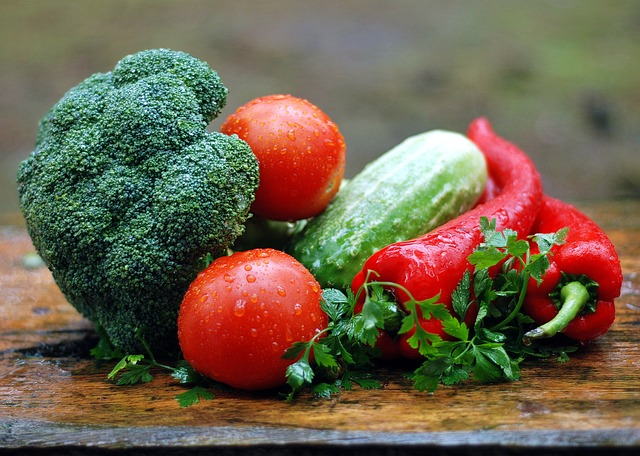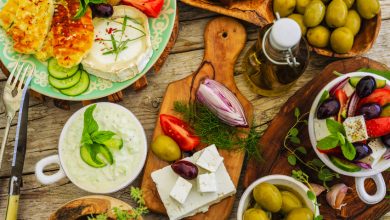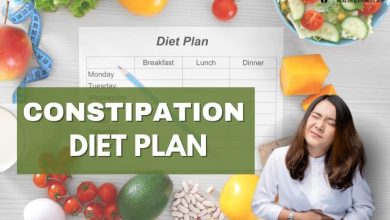Top 4 Frozen Veggies That Lower Blood Pressure, According to Dietitians

High blood pressure (hypertension) quietly raises the risk of heart disease and stroke for millions worldwide — and one of the easiest, most affordable tools to fight it lives right in your freezer. Frozen vegetables are convenient, inexpensive, and (contrary to a common myth) often just as nutritious as fresh produce. Dietitians regularly recommend keeping certain frozen vegetables on hand because they pack minerals, fiber, and plant compounds that help relax blood vessels, balance electrolytes, and reduce inflammation — all key for healthy blood pressure.
Below I walk through the top four frozen vegetables dietitians point to for blood pressure control, explain the science behind each one, and share practical tips for buying, storing, and cooking them so you actually get the benefits.
Quick science primer: how vegetables help lower blood pressure
Vegetables lower blood pressure through several overlapping mechanisms:
- Potassium — raises urinary sodium excretion and helps blood vessels relax; higher potassium intake is consistently linked with lower blood pressure.
- Dietary nitrates — abundant in some leafy greens (like spinach) and converted in the body to nitric oxide, a molecule that dilates blood vessels and lowers blood pressure.
- Plant protein and isoflavones — found in soy (edamame) and legumes; meta-analyses show soy-based foods can modestly reduce blood pressure.
- Sulforaphane and antioxidants — compounds in cruciferous vegetables (broccoli, Brussels sprouts) that reduce oxidative stress and inflammation, helping arteries function better. Recent trials show blood-pressure benefits from cruciferous intake.
The DASH eating plan — the gold standard for diet-based blood pressure control — emphasizes vegetables for these exact nutrients, and dietitians frequently point to frozen options as an easy way to meet those targets.
1) Frozen spinach — the nitrate-rich leafy green that relaxes arteries
Why dietitians love it
Spinach is a top pick because it’s loaded with potassium and dietary nitrates. Nitrates convert to nitric oxide in the body, which dilates blood vessels and lowers arterial stiffness — measurable effects that some studies link to reductions in blood pressure. Frozen spinach offers the same nitrate and mineral benefits as fresh and is extremely versatile (smoothies, soups, sautés).
What the research says
Clinical studies have shown that eating nitrate-rich leafy greens (including spinach) improves blood-vessel function and can reduce systolic blood pressure in the short term. Reviews of nitrate supplementation (from vegetable sources like spinach and beetroot) also show favorable effects on blood pressure and vascular health.
How to use frozen spinach for blood pressure
- Stir a handful into morning smoothies (banana + yogurt + spinach) to start the day with nitrates and potassium.
- Add to soups, chilis, and tomato-based sauces (spinach wilts quickly and blends with flavor).
- Use in omelets, grain bowls, or as a steamed side.
Tip: buy plain, unsalted frozen spinach. Avoid products with added sauces or lots of sodium, which can cancel out the blood-pressure benefits.
2) Frozen edamame (young soybeans) — plant protein and isoflavones that help the heart
Why dietitians love it
Edamame is a convenient, frozen-ready source of plant protein, fiber, magnesium, and soy isoflavones. Dietitians recommend swapping in edamame for higher-sodium or high-fat snacks and meats because soy products have been associated with modest reductions in blood pressure — especially in people who already have hypertension.
What the research says
Meta-analyses and controlled trials indicate that soy protein and soy isoflavones can lower both systolic and diastolic blood pressure, particularly in people with elevated baseline blood pressure. While individual results vary, the overall evidence supports including soy foods (like edamame) as part of a heart-healthy eating pattern.
How to use frozen edamame for blood pressure
- Steam frozen edamame and sprinkle with a pinch of low-sodium seasoning for a fiber-rich snack.
- Toss shelled edamame into salads, grain bowls, or stir-fries for a protein boost that reduces the need for red/processed meats.
- Blend edamame into hummus-style dips to increase potassium and plant protein without added sodium.
Tip: shelled edamame is versatile and quick — look for varieties with no added salt.
3) Frozen broccoli (and other cruciferous veg) — sulforaphane and antioxidants that support vessel health
Why dietitians love it
Cruciferous vegetables (broccoli, Brussels sprouts, cauliflower) contain sulfur-containing compounds like sulforaphane, plus vitamin C, potassium, and fiber. Dietitians often recommend frozen broccoli because it’s inexpensive, has a long shelf life, and retains much of its nutrient profile through quick freezing. Research suggests regular intake of cruciferous veg supports healthy blood pressure and overall cardiovascular markers.
What the research says
A randomized controlled crossover trial found that daily consumption of cruciferous vegetables lowered blood pressure in adults with mild elevations compared with other vegetable groups. Other clinical and meta-analytic evidence links broccoli/sulforaphane intake with improved endothelial (blood vessel) function and reduced inflammation — both protective for blood pressure.
How to use frozen broccoli for blood pressure
- Roast or steam frozen broccoli florets (toss with a tiny amount of olive oil and lemon zest). Roasting brings out flavor without needing salt.
- Add to stir-fries, pasta, or soups near the end of cooking to preserve nutrients.
- Combine with beans or whole grains to make a balanced, potassium-rich bowl.
Tip: cruciferous veggies are mildly bitter to some palates; a squeeze of lemon or a sprinkle of toasted seeds balances the flavor without adding sodium.
4) Frozen peas (and other legumes) — potassium, fiber, and steady blood sugar support
Why dietitians love it
Frozen peas (and other frozen legumes) are a double-win: they provide potassium and fiber as well as plant-based protein. Potassium helps counterbalance sodium’s blood-pressure-raising effects, and fiber supports weight and blood sugar control — both relevant to long-term blood pressure management. Dietitians recommend peas because they are affordable, quick to cook, and blend easily into many dishes.
What the research says
Evidence supports increasing potassium intake to lower blood pressure — and WHO guidance specifically highlights potassium-rich vegetables and legumes as an effective public-health strategy. Randomized trials and observational studies also link higher legume intake (peas, beans, lentils) to modest blood-pressure improvements.
How to use frozen peas for blood pressure
- Stir peas into risottos, soups, and pilafs in the last few minutes of cooking.
- Mash peas with olive oil, lemon, and mint for a low-salt spread on whole-grain toast.
- Add to salads or pasta for color, texture, and a potassium hit.
Tip: peas freeze and reheat well. Avoid canned peas (often high in sodium) and instead choose plain frozen peas to control salt.
Choosing frozen veggies: what to look for (and what to avoid)
Dietitians emphasize a few shopping rules to make frozen veggies heart-smart:
- Pick plain, unseasoned options. Avoid mixes with sauces, cheese, or added salt — those extras can contain lots of sodium and saturated fat.
- Check the ingredient list. The shorter the list (ideally just the vegetable), the better.
- Watch sodium on prepared frozen meals. Many frozen entrées are salt-heavy; instead pair plain frozen veggies with lean proteins and whole grains.
- Buy varieties you’ll actually use. Having spinach, peas, broccoli, and edamame in the freezer makes it easier to follow a DASH-style meal plan.
Practical meal ideas to add these frozen veggies to your week
- Breakfast: Scramble eggs with frozen spinach and a side of whole-grain toast. (Spinach + potassium + protein = great start.)
- Lunch: Grain bowl with brown rice, roasted frozen broccoli, shelled edamame, and a tahini-lemon dressing.
- Snack: Steamed edamame sprinkled with chili flakes (no salt).
- Dinner: Lentil and pea soup with chopped frozen spinach stirred in at the end.
- Smoothie: Banana + frozen spinach + unsweetened yogurt + chia seeds — potassium and nitrates without added salt.
These swaps are small but additive: consistently replacing higher-sodium or processed options with frozen vegetables supports lower blood pressure in the long run.
How much do frozen veggies actually move the needle on blood pressure?
No single food is a magic cure — but vegetables are foundational to diets proven to lower blood pressure, like DASH. Increasing intake of potassium-, nitrate-, and fiber-rich vegetables has measurable benefits: public health guidance and multiple clinical studies show that higher potassium intake and more vegetables reduce systolic and diastolic blood pressure at the population level. Trials focusing on specific vegetable groups (leafy greens, cruciferous veg, legumes, soy) have reported modest but clinically meaningful drops in blood pressure, especially in people who started with higher readings.
Put another way: incorporating these frozen vegetables consistently — as part of an overall DASH-style approach (lower sodium, more whole foods, balanced meals) — can result in meaningful improvements in blood pressure over weeks to months.
Quick answers to common questions
Are frozen vegetables as nutritious as fresh?
Yes — for most nutrients, flash-freezing soon after harvest preserves vitamins and minerals. Frozen vegetables often retain more nutrients than “fresh” produce that’s been shipped long distances and stored for days. The key is to choose plain varieties and avoid added sauces or salts.
Can I eat frozen veggies every day?
Absolutely. Dietitians regularly recommend daily servings of vegetables. Frozen options make it realistic — aim for a variety across the week (leafy greens, cruciferous veg, legumes, starchy veg) to cover a spectrum of nutrients.
Do I need to worry about sodium in frozen vegetables?
Plain frozen vegetables are usually low in sodium. The real pitfall is pre-seasoned or sauced frozen mixes and many frozen meals, which can be sodium-heavy. Always read labels.
Shopping list: freezer essentials for heart health
- Plain frozen spinach (nitrate-rich)
- Shelled frozen edamame (soy protein and isoflavones)
- Frozen broccoli florets (cruciferous benefits)
- Frozen peas or mixed legumes (potassium + fiber)
- Optional: frozen beetroot (another nitrate source) and frozen berries (antioxidants for vascular health)
These items cover the nutrients dietitians most commonly recommend for blood pressure support: potassium, nitrates, fiber, plant protein, and antioxidants.
Final takeaways — how to make frozen veggies work for blood pressure
- Make them a habit. Keep the freezer stocked with at least two of these staples so you can add them to any meal.
- Pair wisely. Use frozen vegetables to replace salty sides or processed components of meals — the substitution matters more than any one “superfood.”
- Watch the salt. Choose plain veggies and flavor with herbs, lemon, or spices instead of salt.
- Think overall pattern. Frozen spinach, edamame, broccoli, and peas are powerful allies — but their full benefit appears when they’re part of a DASH-style, whole-food eating pattern.
Sources & further reading (selected)
- EatingWell — Top 4 Frozen Veggies for Better Blood Pressure, Backed by Dietitians. EatingWell
- DASH diet — National Heart, Lung, and Blood Institute (NHLBI). Mayo Clinic+1
- Spinach nitrate studies and reviews. PMC+1
- Soy protein and blood pressure meta-analyses. PubMed+1
- Cruciferous vegetables randomized trial and broccoli/sulforaphane reviews. PMC+1
- WHO evidence summary — increasing potassium to reduce blood pressure. World Health Organization




